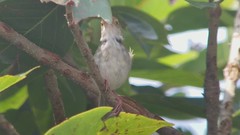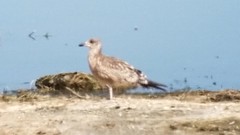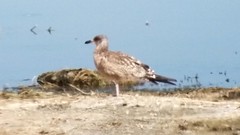Listing. Eventually, it seems all birders who have been seduced by the listing game stumble across a would-be lifer (or would-be county-year bird, or yard bird, etc.) but they just aren’t sure whether or not “it counts.”

This Common Loon was found in Nelsonville (Athens Co) Ohio and released in Columbus (Franklin Co) on 25 January 2014 where it remained through the end of the month.
Would you count this bird on your life list? Ohio year list? Franklin Co. January List?
So how do you know when a bird counts? When you can add it to your list? I firmly believe in “Your list, your rules.” If you really want to keep a list that includes birds seen at the zoo, go for it. Ultimately, you decide. However, a decade or so of birding has taught me that most of us aren’t so open to listing everything, nor are we so fiercely independent that we see listing as a purely personal endeavor.
We keep lists because it’s an enjoyable way to document our birding milestones, to set goals, to push ourselves to learn more about our local or global avifauna, to better enjoy a vacation or business trip, or to engage with other birders through a little friendly competition. In reality, most of us want to keep lists according to community rules. Rules like the those spelled out in the American Birding Association (ABA) Code of Ethics.
But how do we go about applying those criteria? It turns out it isn’t that hard to find that gray area where it isn’t clear whether a given bird observation counts or not. For example: Does an injured Great Horned Owl, hit by a car and seen on the side of the road, count under rule 3.c.iii? Do Trumpeter Swans in the Great Lakes count yet? Given that many states farm and release them for hunting, where in North America are Ring-necked Pheasants countable?
One solution is to fall back on “Your list, your rules” but in the spirit of following community rules, what I would prefer to follow instead is precedent. Which brings us to the case of the Common Loon, and my motivation for writing this post in the first place: I’d love to see the ABA’s newly revived Recording Standards and Ethics Committee take up that challenge of (1) summarizing what we know from existing precedent, (2) soliciting examples of those “gray area” observations, and (3) providing an analysis of those “gray area” birds that’s accessible to the rest of the birding community.
Here in Ohio, we kick off each new year by gunning for 100 species in the state during January. This past January, a Common Loon (S16515764) appeared in Columbus (Franklin Co) and for many of us was our only observation of that species for the county during January. It was swimming freely in a stretch of open river, and was present from 25 January through the end of the month. Seems countable, right? Well, there’s catch: with little open water in the region at the time, it turns out this bird was released there by rehabbers on the 25th after it was found in a driveway in Nelsonville (Athens Co) about 60 miles southeast of Columbus earlier in the month. It also may have taken a long flight upriver the day after it’s release.
So when, if ever, did this bird count for those of us keeping Franklin Co. lists for that January? Was it “alive, wild, and unrestrained” immediately after release, or did it take a few hours (or days?) before it became countable? Does the fact that it was brought to the county by people strike it from our county lists, but not our “January 100” list for the state?
In the end, I think we all ended up seeing it long enough after it’s release that we went ahead and counted it for our county lists. For our local games, I think most of us also counted other “iffy” birds like Ring-necked Pheasants out at Battelle Darby Creek Metro Park (very likely released there), and Trumpeter Swans which here in Ohio are almost certainly descendants of introduced birds now breeding in the Great Lakes region (their countability is questionable which has left many to defer to the state records committee).
So what do you think? Are there any species in your area that the locals count but maybe shouldn’t? Any that should count that local birders refuse to elevate to the status of “countable”? Do you apply different criteria to your different lists?
UPDATE: Check out these two comments threads here and here for some good approaches to interpreting the ABA Code of Ethics.














